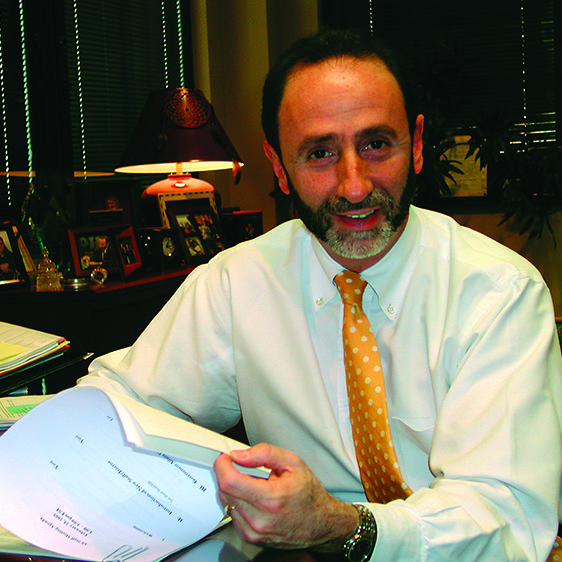For juvenile court judges, correctional facility administrators and community supervision agency leaders throughout the country, the progress juvenile justice systems have made in recent years is clear. Nationwide, juvenile arrest rates are at historic lows, and incarceration rates have plummeted by more than half.
Despite these tremendous strides, data and experience indicates that juvenile justice systems are still not operating as effectively as possible. In the face of stubbornly high recidivism rates and enduring racial disparities, many jurisdictions are making only minimal tweaks to improve their juvenile justice systems.

Shay Bilchik
Confronting these persistent challenges will require innovative thinking and bold solutions that both strengthen public safety and lead to better futures for youth who come in contact with the system. To push the field in this direction, The Council of State Governments Justice Center (CSG) and the Center for Juvenile Justice Reform (CJJR) at Georgetown University partnered last fall to interview nearly 50 researchers, national experts and system leaders from across the juvenile justice continuum to solicit their ideas about how juvenile justice systems could significantly improve outcomes for youth.
What emerged from these discussions was “Transforming Juvenile Justice Systems to Improve Public Safety and Youth Outcomes,” a new publication that presents six strategies — grounded in the latest research and developmental science — designed to fundamentally alter how juvenile justice systems operate.
Narrower focus needed

Josh Weber
Our interviews with these thought leaders in the field uncovered several areas where system transformation is most needed. First, despite good intentions, juvenile justice systems have strayed from their core mission of protecting public safety. This tendency manifests at an early entry point into the juvenile justice system — the courts — where dockets are laden with an overwhelming number of youth whose behavior is not a public safety risk.
In 2014, 54,000 youth were referred to juvenile courts for violent offenses, compared to more than 500,000 who were referred for nonviolent acts — including 100,000 for relatively normative adolescent behaviors like breaking curfew and underage drinking. Research shows that system involvement for these youth who are low risk not only does more harm than good, but also redirects limited resources from youth who are most likely to reoffend and most in need of services.
In order to course correct, juvenile justice systems must narrow their focus. By diverting youth who commit low-level offenses from court involvement to beneficial services and restorative justice programming, juvenile justice systems can concentrate on providing effective supervision and services to the smaller number of youth who present a true public safety risk. For those youth who remain in the juvenile justice system, conditions of supervision should be realistic and matched to youth’s behavior to ensure the likelihood they successfully comply.
Second, too many courts, corrections departments and community supervision agencies rely solely on anecdotes and professional discretion to make decisions about who requires system supervision and services, what type, for how long and whether resources are being used efficiently to improve outcomes for youth. Although most jurisdictions have access to validated screening and assessment tools, many don’t use those tools consistently enough to guide these critical system decisions.
The result is that some youth are incarcerated or kept on community supervision for far too long, while others don’t receive the supervision or services they need to address the problems underlying their behavior. Policymakers and system leaders need to use data and research to make smarter supervision and service decisions, determine the best ways to invest limited resources, regularly review how systems perform and hold agencies and service providers accountable for results.
Not your stepping stone
Third, states and counties need to reorient certain roles and prevailing attitudes within courts and juvenile justice agencies. The juvenile court is too often viewed as a stepping stone to other assignments and, consequently, judges and attorneys never develop the training or expertise to provide a consistent and effective court experience for youth and families.
Jurisdictions can address this deficit by establishing standards, procedures and structures, such as dedicated juvenile court judicial assignments and specialized juvenile divisions within prosecutors’ and public defenders’ offices, to ensure that the judges and attorneys who make daily decisions that impact youth for the rest of their lives are well qualified and trained.
Similarly, community supervision agencies must reposition officers as agents of positive youth behavior change instead of relying on surveillance- and sanction-heavy approaches that haven’t been shown to reduce recidivism. At the same time, agencies can hold youth accountable in a more effective way by employing restorative justice and other practices that ensure youth repair any harm caused to victims and communities.
Lastly, many correctional and community supervision agencies fail to emphasize youth’s relationships with their families because they often view families in a negative light — blaming them for youth’s delinquent behavior — even though research clearly shows that youth are less likely to reoffend when they maintain positive relationships with caring adults and their peers. Systems should place more emphasis on family- and community-centric approaches so that youth have the best chance to lead productive lives after their time in the system has ended.
It won’t be easy to restructure juvenile justice systems in these ways. However, as the progress of the last two decades has shown, considerable change is possible if all branches of government, service systems, advocates and national experts work together with youth and families to create better, smarter and safer juvenile justice systems.
Shay Bilchik is the founder and director of the Center for Juvenile Justice Reform at Georgetown University’s McCourt School of Public Safety.
Josh Weber is deputy director of corrections and reentry at The Council of State Governments Justice Center.

Thank you for this outstanding report, Shay and Josh. You are right on track — the field has made huge strides but we still have recidivism rates that are ‘stubbornly’ unchanged and unacceptably high, and the system displays a tendency toward racial discrimination. We must do more to keep young people out of the system, leverage the strengths of those who are in the system, and apply best practices and evidence-based programs to provide a continuum of high-quality services to meet their needs while they work through their issues in the community.
This report is a valuable and important contribution to the dialogue not just in the Commonwealth of Massachusetts but also in states throughout the country. In the Massachusetts Department of Youth Services, we use a wide range of tools to make decisions about who requires system supervision and services, what type, for how long and whether resources are being used efficiently to improve outcomes for youth.